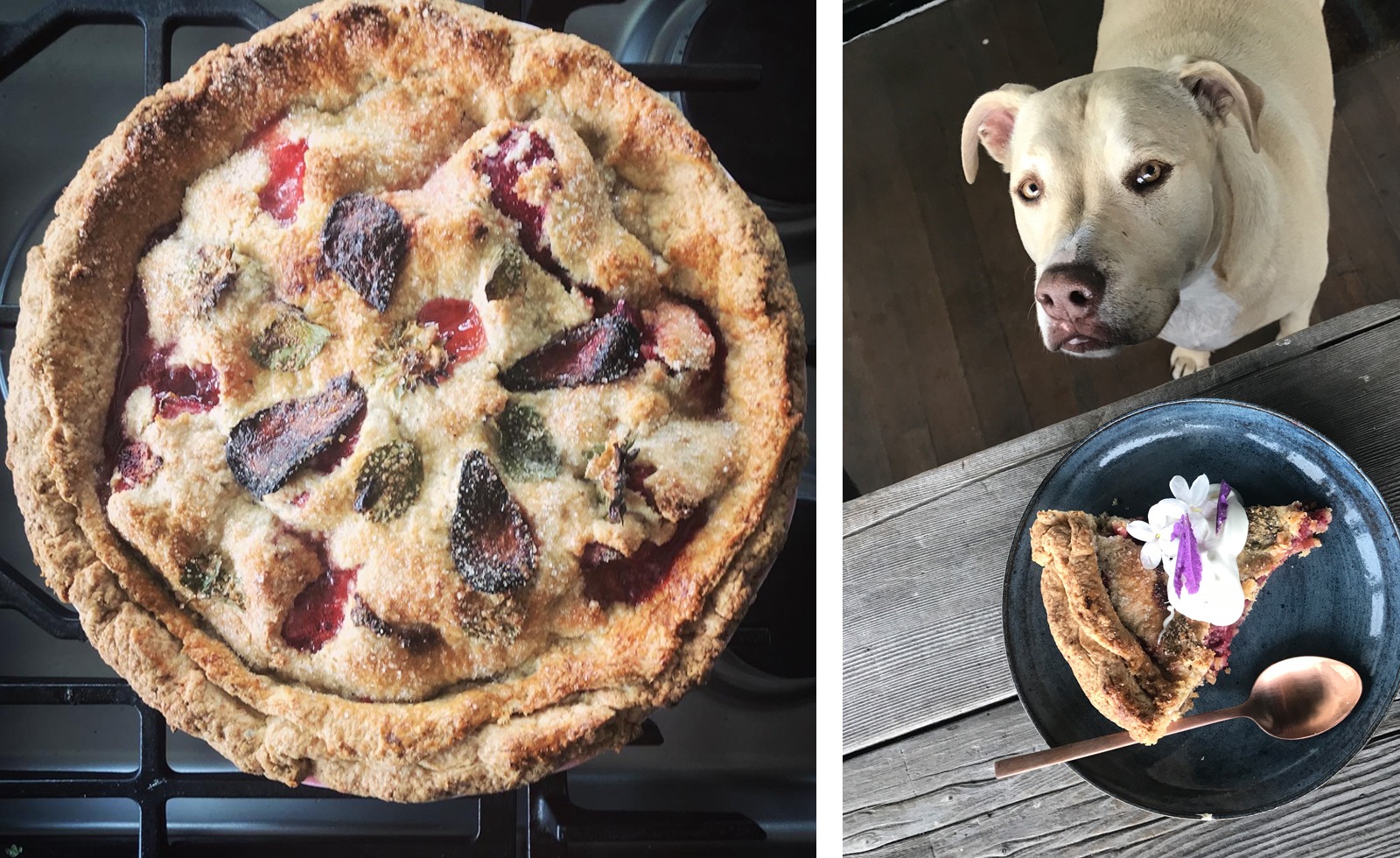Silver Lining Pie
MAY 27TH 2020
From the moment many of us were sent into our homes to shelter-in-place, the baking rumpus had begun. So much so that most baking supplies became scarce, sending a wave of panic over those looking for something fun and calming to occupy the foreseeable future. Well-known for my laidback attitude about having the right supplies in the kitchen and life, I knew early on something good would come of it. I certainly wasn’t about to panic about baking.
People all over the globe can attest to the relaxation brought on by baking. It seems quite obvious that, during this pandemic, baking has become a nurturing way to self-soothe – as the masses can bake breads, cakes, biscuits and cookies with reckless abandon.
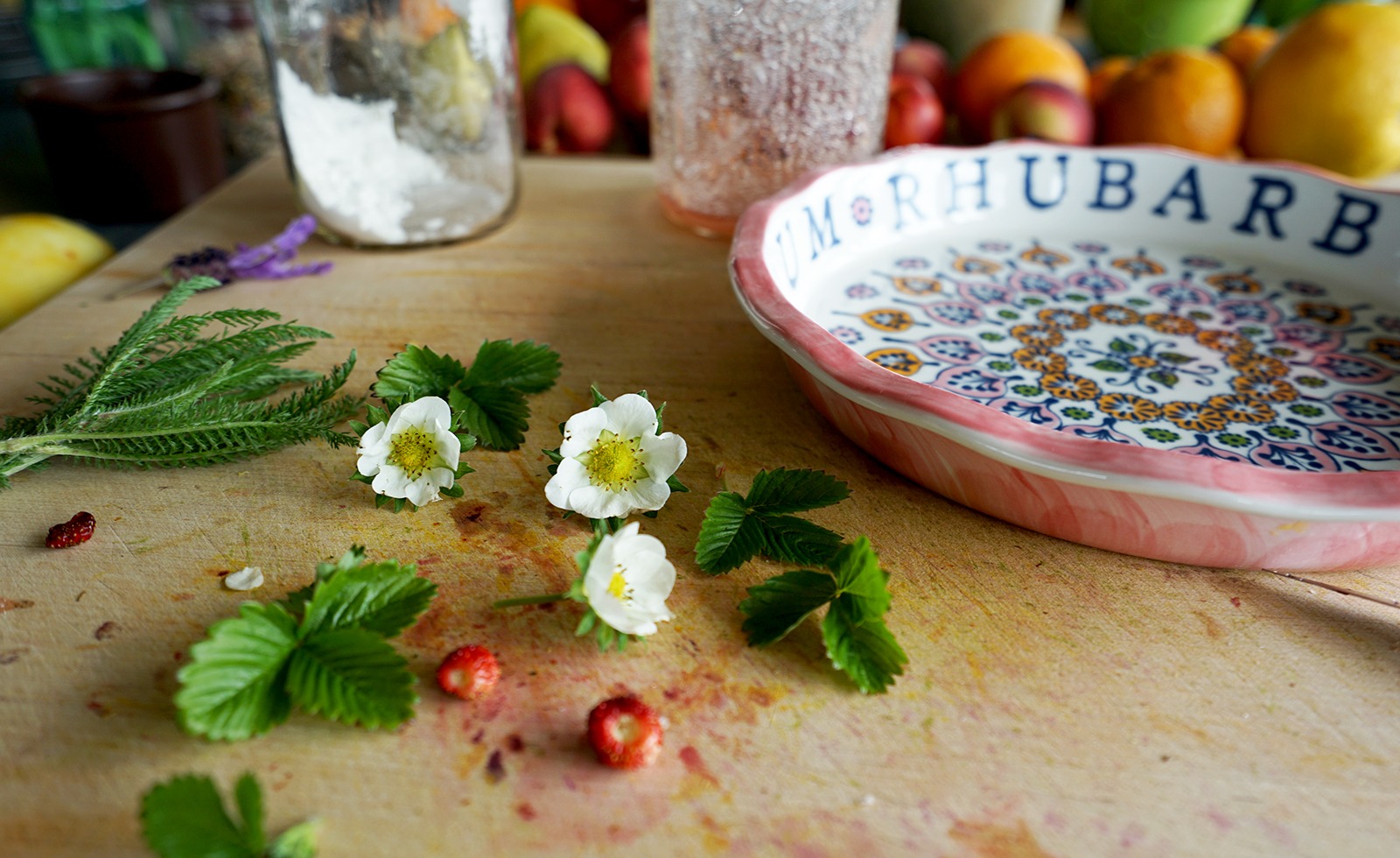
I can’t say I am one of those who experiences calm and serenity from baking. For me, baking is mostly a chore. I like the end result but rarely enjoy the act itself. The incessant need to be precise feels like a constraint, since it makes it difficult to change up a recipe on a whim. With baking, I often feel deflated and bored before I even start to pre-heat the oven.
I came into the COVID-19 situation well-stocked on baking supplies. It’s no surprise that I am well-stocked in general, with all the cooking projects I am constantly juggling. I also recently had prepared for a pie cooking class that had to be canceled last minute late last fall, due to a California power outage. So, I had 10 bags of flour on hand at the time this quarantine began. I almost left like a toilet paper hoarder. (Which I also had plenty of on hand- I do live in an isolated town so being prepared is a way of live here.)
Like the toilet paper situation, I assumed flour would become more readily available by the time I needed some. Under this impression, I readily gave away bags of flour (I felt like Oprah) and baked cookies and cakes and other stuff regularly (gave those away too). Eventually, though, I started to run low. I had bread flour, which I didn’t want to dip into, because that’s crucial for pizza. Eventually my laidback attitude got ruffled, and, when I noticed empty grocery store shelves time and time again, I began to scour online and found much of the same.
And then, like magic, the silver lining appeared – as it often does, if you can stave off the stress and anxiety long enough to allow yourself to see it.
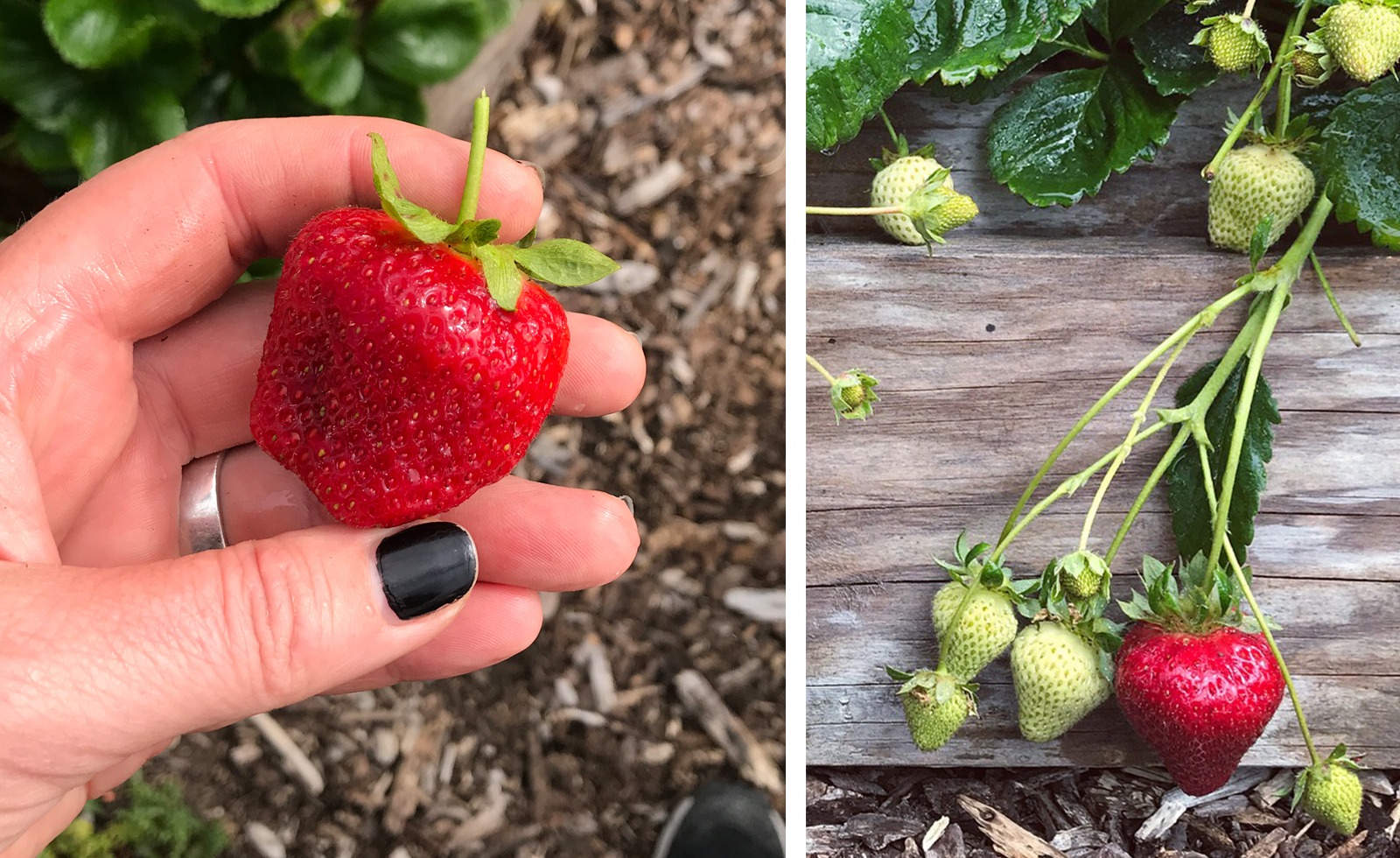
Every day I would spend a few minutes browsing online looking for flour. I hadn’t yet run out but knew I would soon, so I felt like this was a much better use of my time than, let’s say, playing (aka wasting time) on Facebook. I thought it would also prompt me to crawl out of my all-purpose flour hole and have a few different flours on hand at all times: bread flour, cake flour, pastry flour, and all-purpose flour. After all, each serve a different purpose and each make a real difference in the finished product. The better the quality of flour, the better the baked good. It was time for me to change my flour situation and much like a major change in life, the best change is often born from a moment in time of trouble or stress. This was that.
Eventually, in my daily internet browsing for flour, I stumbled upon something interesting (through Amazon, originally). It wasn’t just any flour, but the kind of flour that I never knew I needed. (Silver linings often play out like that.) Granite Mills Farms Stone Ground Sprouted Organic Soft White Wheat Pastry Flour appeared in my search field like a rainbow after a storm. It was priced well, organic, Montana-grown and processed from a small family farm. I felt like I had struck gold, and I hadn’t even used it yet.

Granite Mills Farms produces sprouted organic wheat flour in the beautiful plains of Montana. Have you ever seen a wheat field? I lived back up against one for a short stint in North Dakota (that’s a story for another time) it’s like an ocean of gold… an exquisite sight. All of their flours use sprouted grains, making the grain more digestible. It’s all stone ground using a traditional granite stone mill. There are no additives and nothing has been removed. It’s pure and healthy in every way.
Organic flours have long been a part of my repertoire, especially considering GMO’s are still banned (fingers crossed that continues) in organic certified products. Sprouted flours have never fully interested me, as most I tried were dense and didn’t really jive with the items I was baking regularly. Times are changing, do we give kudos to the gluten free folks? Either way the health benefits of sprouted grains have always been available to us. (Check out all the health benefits on Granite Mills website.)

Pastry Flour
Technically, it’s got a lower protein content, which is why it’s made with soft wheat. Wheat varieties fall into soft or hard categories. The soft wheat varieties make a more tender baked good. It’s best used whenever you might use baking powder as the leavener or none at all. It is not ideal for breads and pasta or anything that demands a clear shape or structure.
All-Purpose Flour
Is made with what’s called the endosperm of the grain – the starchy center section which consist mostly of carbohydrates and protein, and a little oil. Since the whole grain is not used and most of the vitamins, minerals, and fiber are found outside the endosperm on the germ, all-purpose flour is technically the least nutritious. This, along with the process is also why it has the longest shelf-life.
I tend to fall into the all-purpose flour trap because it’s easy and convenient and it does make things taste more ‘processed’ which, truth be told, sometimes can be exciting. Finding the Granite Mills pastry flour feels like it can really change my baking game, like I’ll no longer need to fall back on all-purpose nor sprouted grains that tasted like boots.
Bread Flour
If you bake bread, you are certainly familiar with this flour. I don’t bake bread, and I have no interest in it. But I do insist on eating homemade pizza once a week, so I have to have bread flour for my crust. Bread flour is made of the hard wheat varieties which have really high protein content, which makes the goods chewier with much more texture. Never use bread flour on anything that you want to be tender and crumbly. If you interested in becoming an at home pizza (dough) maker, this is the flour for you.
Cake Flour
Cake flour, like pastry flour, changed my cakes and, therefore, my life. Cake flour is super ultra-finely ground and made of mostly soft wheat. It’s almost always found bleached, which gives way to a better rise. It yields fine, airy, and light results. Birthday cakes with cake flour are necessary for optimal joy. They say you can make your own cake flour by adding two tablespoons of cornstarch for every one cup of all-purpose flour and sifting it together. I agree that it makes a lighter cake, but actual cake flour using the ultra-fine grind yields even fluffier, lighter results. FYI: cake flour does not have baking powder in it.

When the pastry flour came in the mail, my flour collection was complete, and it was time to start baking. Being strawberry and rhubarb season, I felt a pie was in order. The flour made the most incredible tasting crust. I was completely enamored by the pastry flour from the get go. It didn’t taste grainy at all. It had the perfect amount of added texture with a delicate “grainy” flavor. I used it to make chocolate chip cookies and felt that my cookies had more depth than they ever had before. Even the neighbor kids loved them. A recent stone fruit galatte (with crust made of this flour) impressed some food-centric friends I invited into my quarantine circle. (I am slowly and carefully enlarging my circle.)

The silver lining for me is that I found a small organic flour farmer to support. This aligns with the rest of my values and it took the shortage to remind me that I shouldn’t be filling my cupboard or belly with all-purpose flour. When you have the rest of the flours you need on hand, the possibilities are limitless!
I ordered a few more of their flours including a rye and a soft wheat white, both sprouted grain, and will report back with my endeavors and thoughts!
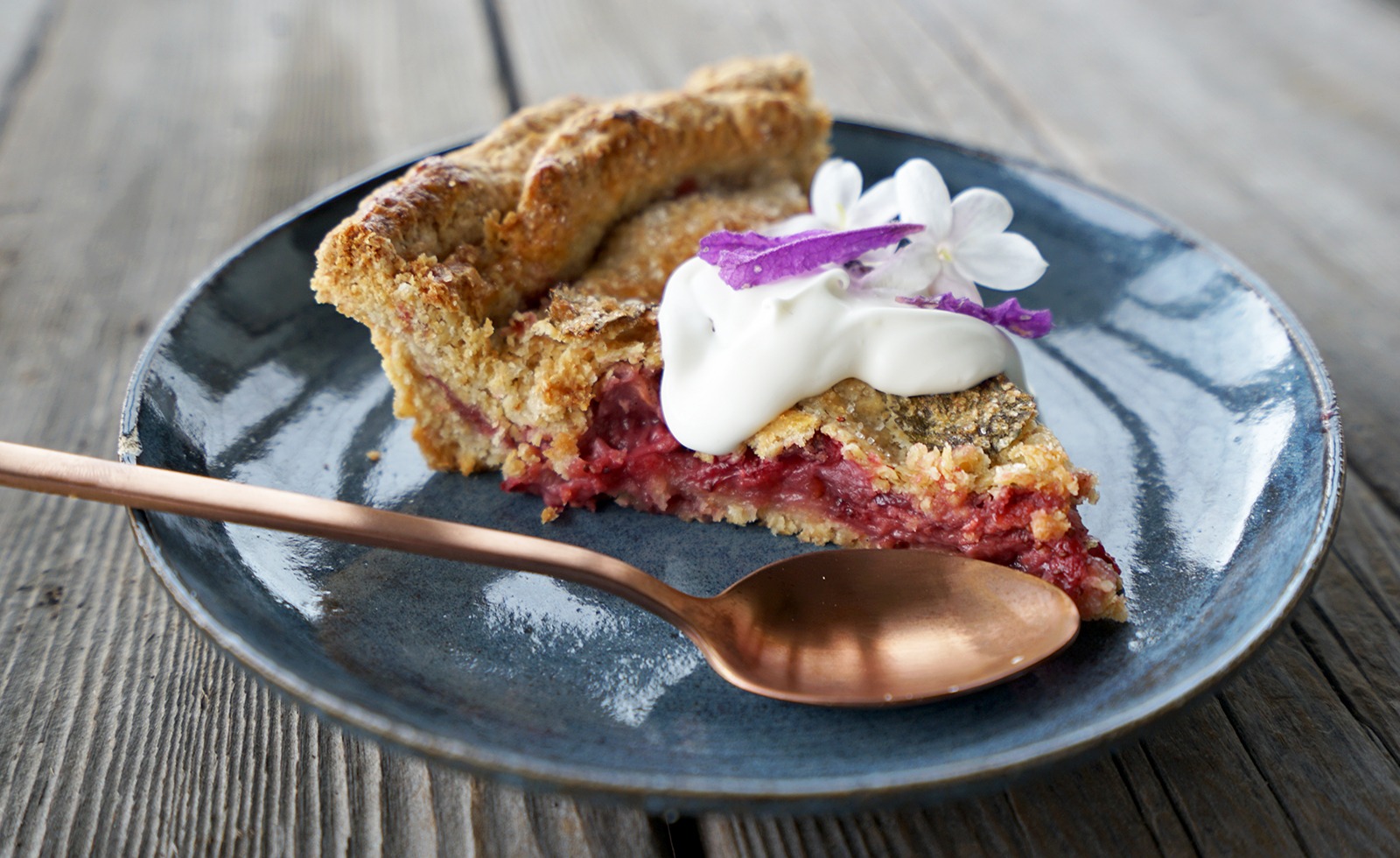
Strawberry-Rhubarb Herb Pie
Makes 1 9-inch pie
I’m particular with rhubarb so, for this pie, I came up with a simple method to add more rhubarb depth to my pie – rather than just use chunks of raw rhubarb, which I don’t like. First, I macerated the rhubarb with sugar and a vanilla bean, as well as some lavender and jasmine petals for some perfumed tones. Eventually tossing that together with fresh strawberries and then baking it gave me the pie I wanted… a strawberry pie with rhubarb essence. It also reduced the need for sugar, since I was injecting the rhubarb with sugar more than the strawberries. Of course, the crust is herbaceous (as usual for my pies) and tasty, too. I got my art deco on for this one and tried to make it Instagramable. Did I succeed?
Ingredients
For the macerated rhubarb:
1 ½ cup chopped small rhubarb
½ cup sugar
¼ teaspoon ground cardamom
1 vanilla bean, pod and seeds (scraped)
A few jasmine petals (optional)
A few lavender petals (optional)
For the pie crust:
2 ½ cups pastry flour (Granite Mills Sprouted Wheat Pastry Flour)
1 teaspoon salt
2 teaspoons sugar
2 fresh strawberries, chopped
A few spoonsful of lavender petals
2 teaspoons lemon zest
2 sticks (1 cup) salted butter, cold and cut into small cubes
¼ – ½ cup ice water mixed with 1 tablespoon white balsamic vinegar or vodka
For the finishing touches of the pie:
3 cups halved strawberries
1 egg, beaten
1 tablespoon cream or half and half
Sugar
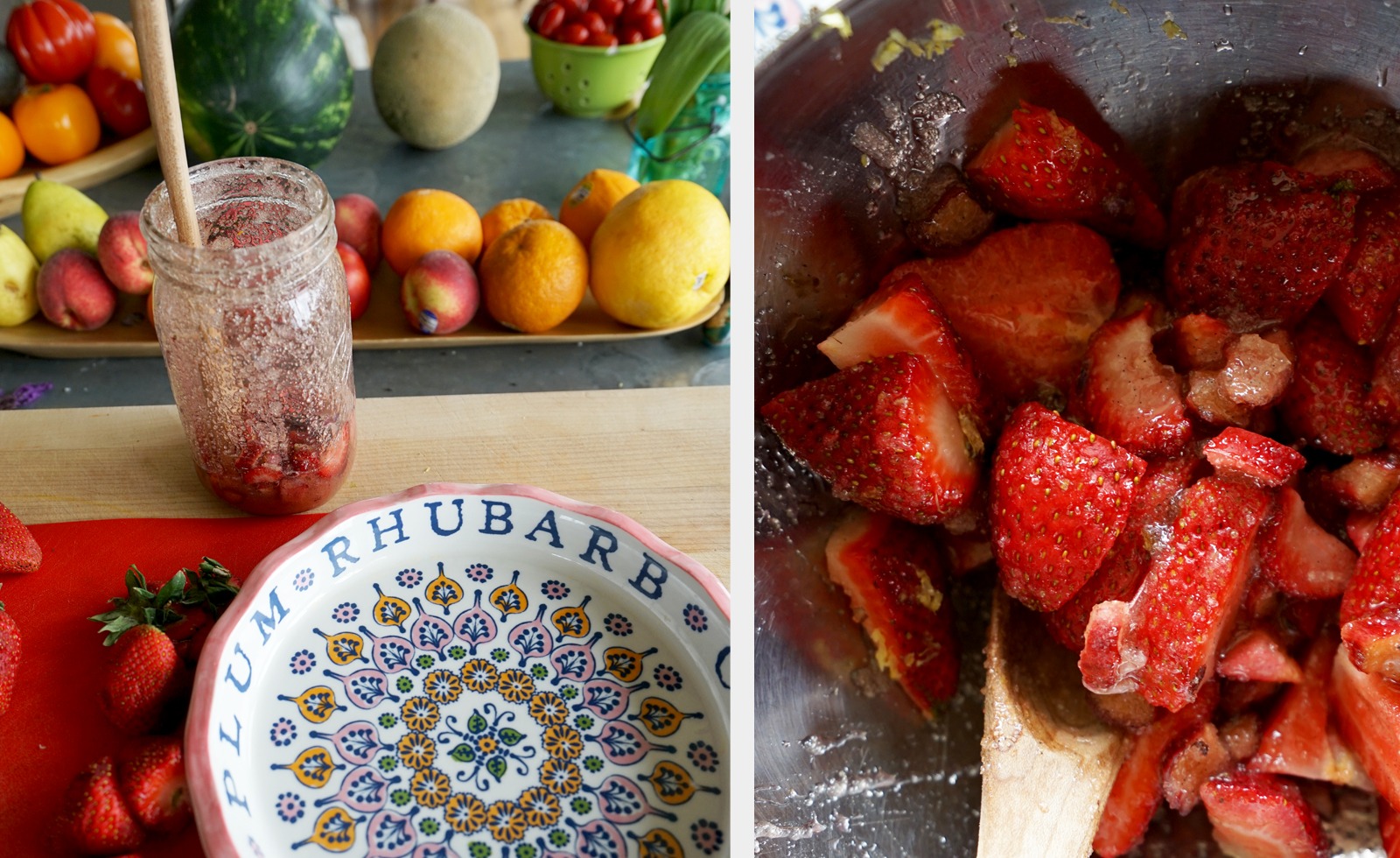
Directions
For the macerated rhubarb:
Combine all of the ingredients in a mason jar and shake. Continue to shake for a few hours before making the pie.
For the crust:
Add the flour, salt, and sugar to the bowl of the food processor, and process until mixed. Add the strawberries, lavender, lemon zest, and butter cubes, and pulse until the butter and flour mixture turns into a coarse, pebble-like consistency. Add ¼ cup of the ice water through the top of the processor while you continue to pulse. You want the dough to “just” come together, so you might need to add 1-3 more tablespoons of the ice water to make this happen.
Once the dough comes together, dump it out of the processor onto a lightly floured work surface, and push it together into a ball. It should not be crumbly nor too moist. You can add a little flour or water to your hands to adjust. Once it comes into a ball, divide the dough into two flat discs, one a bit larger than the other. Shape both cut sides into flat discs, making sure not to handle the dough too much once it comes out of the processor. Place the dough discs in a plastic bag. I use compostable ones, and they work great. Refrigerate until use. Take out of refrigerator ten minutes before use.
Shape the dough:
Grease a 9-inch pie dish with butter.
Roll out 1 dough disc on a lightly floured surface into a 12-inch circle. Transfer the pre-greased pie dish. All around the circle, fold the edges under and form a high-standing rim. Crimp the folded rim, by making small folds or indents. This will be the visible edge of your pie. Chill the dough in the refrigerator while you finish the rest of the pie. Poke holes in the bottom with a fork so that a little air can get through the dough.
For the finishing touches of the pie:
Pre-heat oven to 400° F. Combine the strawberries with the macerated rhubarb mixture (remove the vanilla bean pod), and gently mix together making sure that all the strawberries are coated with the syrupy mixture.
Roll out the second dough disc into a 10-inch round.
Remove the pie crust from the refrigerator and place the strawberry rhubarb mixture inside. Place the top dough over the strawberries. To seal the edges, trim any long pieces hanging over the edge of the pie, and gently tuck them into the edge. Cut out a few holes in the top so the filling doesn’t bubble over and burst out the sides. Mix the egg and cream together and brush the top of the pie. Sprinkle a little sugar over the top. Place in the refrigerator to chill for about 20-30 minutes before baking.
Bake pie 45-60 minutes or until it’s golden brown and the juices are bubbling up through the holes on top. Cool completely before serving.
